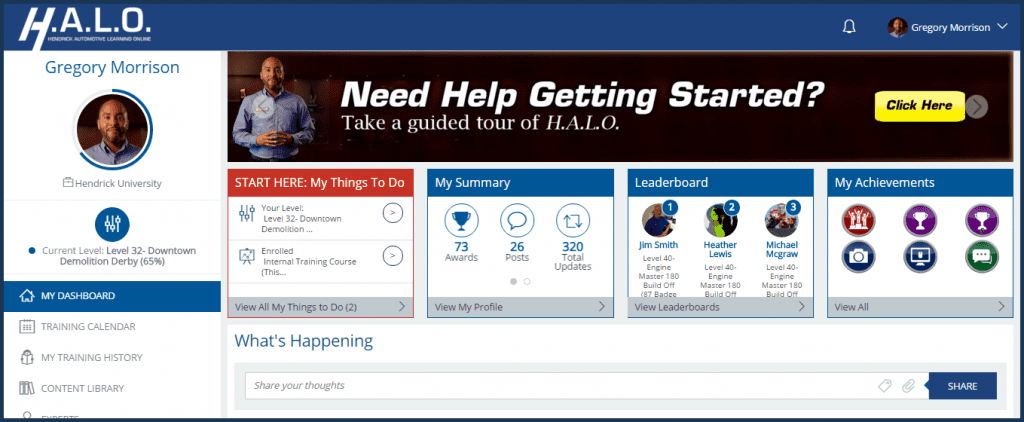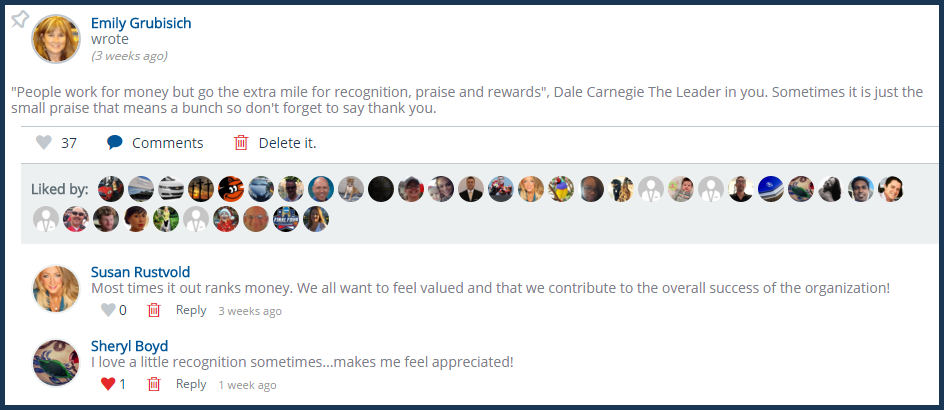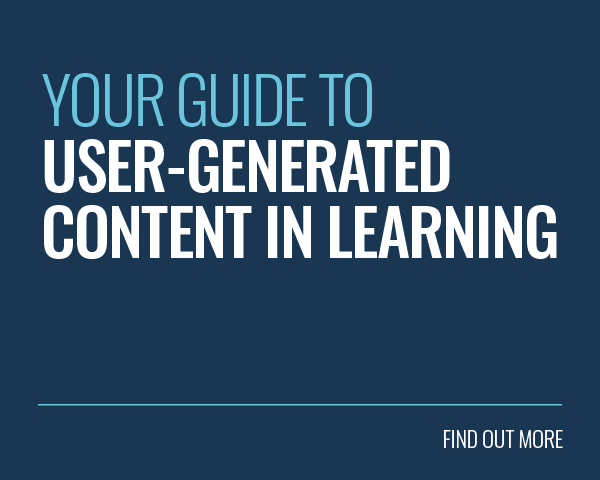 Business leaders looking for shortcuts to increased productivity have seen social learning platforms as a way to improve performance in their organisations.
Business leaders looking for shortcuts to increased productivity have seen social learning platforms as a way to improve performance in their organisations.
In the majority of cases though, these initiatives have backfired, generating poor results, low engagement and disappointment.
But it would be too simplistic to suggest that it’s the fault of the platforms themselves…
With the rise in popularity of social networks, online platforms that let employees interact with each other have been adopted by many businesses.
In fact, in a survey by global management consulting firm, McKinsey & Company, 82% of respondents said that their organisation had implemented an internal social network of some kind.
In the case of social learning platforms, these projects usually have similar aims:
- Improving collaboration between departments
- Finding a more efficient training method
- Getting a measurable ROI on training spend
- Harnessing intellectual capital
These are all noble goals and each one of them can boost organisational performance, but the sad fact remains that these targets are missed more often than not.
Why Social Learning initiatives fail
Gartner has estimated that a massive 90% of social collaboration initiatives fail due to what they dub the ‘provide-and-pray’ approach. The misguided (and counterintuitive) assumption that if you build it they will come is a fallacy that business leaders fail to recognise time and again.
Failure to Commit
What starts as an online forum to generate discussion among the workforce, turns into a top-down bulletin board. The initial excitement of a new social platform is soon washed away when the employees log in in to find occasional updates on company documentation and half-hearted invitations to take assessments.
According to Jacques Bughin of McKinsey, if a social network is to be a success, between 30% and 40% of staff should be using it as part of their daily work.
“Essentially, the default communication and collaboration channel should be through integrated social tools.”
The reason so many organisations fail to hit their targets and reap the benefits of social learning is that they’re missing a crucial element – the employees’ buy-in.
Over-regulation
A lack of input can spell disaster for a social learning initiative, but on the flip-side, the provide-and-pray approach to staff engagement is exacerbated when management exerts too much control over the way the platform should be used.
Their concerns are valid to a degree – it’s understandable that they wouldn’t want employees wasting their time – but ask yourself this: why would you bother engaging with a platform that’s so heavily regulated?
Lack of Leadership
Over-regulation is just a minor factor. When you look at the failure rate of internal social platforms, it’s immediately obvious where the biggest problem lies. Advisor and author of The Engaged Leader, Charlene Li, spoke to the executive team of a technology firm whose social platform hadn’t performed as well as planned.
She opened with the simple question “How many of you have been on the platform in the past week?”
In a room full of executives, the platform admin was the only person to raise their hand.
“The problem was simple and obvious – because the top executives didn’t see collaboration and engagement as a good use of their time, employees quickly learned that they shouldn’t either.”
The large percentage of failures shines a light on a bigger issue in organisational culture. The disconnect between CEOs and their staff has left employees feeling adrift and as though their input is ultimately meaningless.
Research has shown that meaning is by far a more powerful motivator than financial reward. These CEOs who are kept awake at night because of engagement problems simply need to find a way to let their employees know that their work is recognised and appreciated.
How to make your Social Learning Initiative successful
Luckily, when it comes to solving employee engagement problems, recognising the issue is already half the battle. If you want to get your employees’ buy-in with the programme, first you need to earn the commitment at the highest levels. Only then can the transformative power of social learning trickle down and affect every other department.
Case Study: Hendrick Automotive

One of our clients, Hendrick Automotive, is the largest privately held automotive dealership group in the United States. Before they opted for our social learning platform, the Academy LMS, only 10% of their employees were even aware that their learning management system existed.
Now everyone in the business is aware of the platform with 65% of the 20,000 registered users (well above Jacques Bughin’s recommended 30% – 40%) active on a regular basis. Here’s how they made their social learning platform a success:
An Open Community
Instead of limiting the social functionalities and segmenting their learners, Hendrick wanted HALO (Hendrick Automotive Learning Online) to be as open as possible. Now almost 13,000 active learners (a number that’s growing at an alarming rate) have formed a genuine online community where they share business ideas, relevant articles and advice.
Dedicated Administrators
The period following the release of HALO was Hendrick’s most successful quarter in 40 years. Success like this would not have been possible were it not for the hard work and dedication of the administrative team. They have created an advisory group within HALO made up of the most active learners on the platform, where they plan upcoming initiatives, bounce new ideas around and make sure there’s always something fresh for their fellow learners to discover. The success of the platform is largely down to the admins getting direct feedback from the users, and involving them in the programme’s development.
Recognition from the CEO
Rick Hendrick, the CEO of Hendrick Automotive provides an excellent example of how to motivate and engage employees. Every month, he releases a short video to the platform and this is becoming one of the biggest drivers of traffic to HALO.
In this video, he doesn’t spend time talking about figures and targets – he says ‘thank you’. That’s all it takes to show employees that their efforts are appreciated. Furthermore, his active participation in the HALO initiative legitimises it in the eyes of the employees which only increases engagement even more.

(Click here to download the full HALO case study)
Garner’s gloomy 90% failure rate shouldn’t dissuade businesses from creating a social learning initiative but it should highlight the very important fact: a social learning platform won’t save your organisation – real success, as always, boils down to the people behind the initiative. With enough passion, dedication and respect for the employees’ contribution, you could, like Hendrick Automotive, see success the likes of which you haven’t seen in decades.
Our Engagement Engine Workbook is a step-by-step guide to finding the Epic Meaning that drives your business and making the most of the tools available to you to get your employees excited about their training. Click the button below to download your copy and discover the secret to success for yourself!









